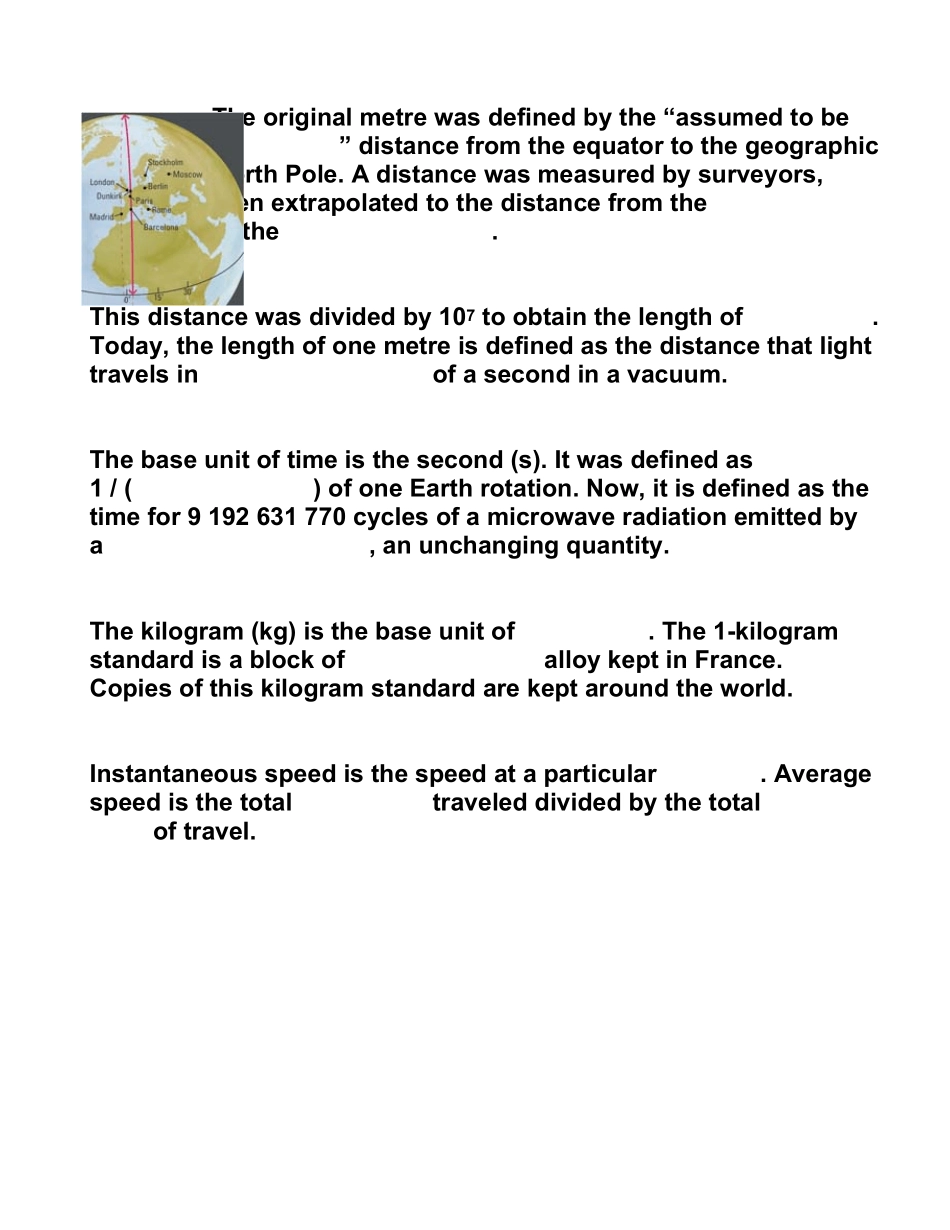FORCES AND MOTION MOTION IN OUR LIVES Recall the follow ing terms: Kinematics: the study of Uniform motion: movement at a in a Non-uniform motion: movement that involves in or or both, also called motion Scalar quantity: quantity that has ( ), but not Vector quantity: quantity that has both and Base unit: unit from which other units are derived or made up (e.g. ) Derived unit: unit that is stated in terms of the base units (e.g. ) Instantaneous speed: speed at a particular Average speed: total of travel divided by total of travel. The original metre was defined by the “assumed to be ” distance from the equator to the geographic North Pole. A distance was measured by surveyors, then extrapolated to the distance from the to the . This distance was divided by 107 to obtain the length of . Today, the length of one metre is defined as the distance that light travels in of a second in a vacuum. The base unit of time is the second (s). It was defined as 1 / ( ) of one Earth rotation. Now, it is defined as the time for 9 192 631 770 cycles of a microwave radiation emitted by a , an unchanging quantity. The kilogram (kg) is the base unit of . The 1-kilogram standard is a block of alloy kept in France. Copies of this kilogram standard are kept around the world. Instantaneous speed is the speed at a particular . Average speed is the total traveled divided by the total of travel. UNIFORM MOTION Position: the and of an object from a reference point Displacement: in of an object in a given Velocity: the of of Average velocity: of divided by the interval for that change The equation for average velocity is: where is the (or change of position) and Δ t is the interval ...


